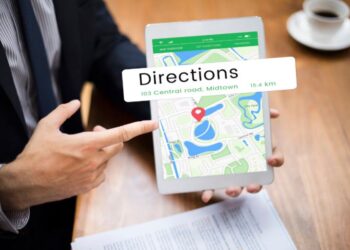Divorce is one of the most challenging life events a person can experience. It can be a difficult, confusing and emotional time. Often, individuals need clarification as to what their legal rights are during the process and whether they should seek legal help. Many may wonder whether they need a lawyer to go through the divorce process. The answer to this question is contingent on various factors, such as the state in which the divorce is taking place, the type of divorce, and the case’s complexity. Laws and regulations differ from state to state so it’s best to hire local, a Virginia Beach divorce lawyer if you’re in Virginia, and a New York one if you’re in New York, for example. This article will provide an overview of the divorce process, the importance of hiring a lawyer, and the legal rights and obligations of both parties. It will also discuss the various methods of obtaining a divorce and the potential costs associated with the process. With this information, readers can make an informed decision as to whether they need a lawyer to get a divorce.
Do I Need A Lawyer To Get A Divorce?
No, you do not need a lawyer to get a divorce. However, if you are considering getting a divorce and are wondering if you should hire a lawyer, it is always a good idea to speak with an attorney before making any decisions. Lawyers can help you understand your options and make the best decision for yourself.
What Is The Divorce Process?
The Importance Of Hiring A Lawyer?
- Hiring a lawyer can help protect your rights and ensure that you are getting the best possible deal for yourself.
- A lawyer can help you navigate the legal system and understand your rights and responsibilities.
- A lawyer can help you prepare and argue your case in court.
- A lawyer can provide emotional support during a difficult time.
- Hiring a lawyer can cost money, but it is often worth it to get the best possible outcome for yourself.
- Lawyers are experts in divorce law and can provide valuable advice if you are considering getting a divorce.
- If you get a bad deal from a lawyer, you can sue them for malpractice, which could result in hefty damages.
- If you decide to go it alone, be aware that there are risks involved with divorcing without a lawyer’s help, including the possibility of losing your case or having to pay large legal fees yourself.
- If you have children, hiring a lawyer can ensure that your rights and interests are represented in court.
- If you are thinking about getting a divorce, speak to an attorney first to make sure you are getting the best possible deal for yourself.
Legal Rights And Obligations Of Both Parties?
- The parties have the right to get divorced.
- The parties have the right to an equitable division of their marital property. This means that each party is entitled to an equal share of the marital property, regardless of who contributed what or when.
- The parties have the right to privacy during the divorce process. This means that they should be able to keep all communications regarding their divorce confidential unless they agree otherwise in writing.
- The parties have the right to file for divorce in a court that is appropriate for their situation. In most cases, this will be either a state or federal court.
- The parties have the right to retain counsel if they choose to do so. Counsel can help you understand your rights and options, as well as provide advice on how to best pursue your divorce.
- The parties have the right to be present at all hearings related to their divorce. This includes hearings related to the dissolution of the marriage, such as child custody and support proceedings.
- The parties have the right to have a divorce decree entered into court. This document sets out all of the terms of the divorce, including who gets what property and how child support will be calculated.
- The parties have the right to appeal any decision made in relation to their divorce. This includes decisions made by judges regarding property distribution, child custody, and alimony/support payments.
- The parties have the right to privacy after their divorce is finalized. This means that they will not be publicly identified with each other or with their former marital status.
- The parties have an obligation to live separately and apart until their divorce is finalized.
Different Methods Of Obtaining A Divorce
- Divorce through mutual consent of both spouses. Divorce through mutual consent is an exciting prospect for couples who have decided to end their marriage in a respectful manner. It ensures that both parties are on the same page and that no one feels like they were taken advantage of. With mutual consent, both spouses must agree to the terms of the divorce, such as child custody, alimony, and more. This option allows couples to move forward with their lives in a more amicable way rather than going through a long and costly court battle.
- Divorce through a court decree. A divorce through a court decree is the most common way to get divorced in the United States. This process begins with filing paperwork with the court, which will outline the reasons for wanting a divorce and what needs to be done to finalize it. After filing, the spouses will have to attend a hearing where the judge will make a decision about whether or not to grant the divorce. If granted, the court will issue a decree of divorce, which must be filed with both spouses’ records.
- Divorce through a separation agreement. A separation agreement is similar to a divorce through court decree in that it begins with filing paperwork with the court. However, separation agreements are often used when couples want to avoid going through a long and costly legal battle. They can also help couples resolve any conflicts or disagreements before they lead to full-blown litigation. The agreement can also set out provisions for child custody, financial support, and more.
- Divorce through a petition for dissolution of marriage. A petition for dissolution of marriage is similar to a petition for divorce through court decree in that it begins with filing paperwork with the court. However, a petition for dissolution of marriage is used when one spouse wants to end the marriage but does not want to go through with a long and costly legal battle. This option is best for couples who have been fighting an ongoing battle and are ready to end it.
- Divorce through an action in rem. An action in rem is a legal procedure used when one spouse wants to end the marriage but does not want to go through with a divorce through a court decree, separation agreement, or petition for dissolution of marriage. This option is best for couples who do not live in the same state as each other and do not want to have to travel to get divorced. An action in rem can be filed in either state where the spouse resides.
Final Words
If you are thinking about getting a divorce, it is always a good idea to speak with an attorney before making any decisions. Lawyers can help you understand your options and make the best decision for yourself.










